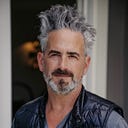Member-only story
In my workshop today that I gave on Daisie, I took participants through an hour-long deep dive into how to add narrative into their photographs. It was a great session, but it really takes some unpacking to truly get what is meant by narrative.
We often intertwine the word “storytelling” with “narrative,” but that’s a little misleading. Yes, narrative is part of storytelling, but storytelling is a generic term that applies to many media, most of which have something that photography does not: Time. With time, characters develop, plots twist, tensions rise and arcs arc. With photographs, famously, time stops. Sure, you can do a series, but what of the single photograph? How is narrative applied there? To get to it, one has to dive a little deeper than simply using the word “storytelling.”
In the workshop, we used narrative and non-narrative poetry as an entry point to push into it further. We even looked at how Scorsese uses a narrator’s voice in his films to create narrative. But one of my favorite parts of discussing narrative is to talk about how we, as photographers, can affect, create and find it, while we shoot. There are many techniques, but the one I want to spend some time on here is the idea of human behaviors.
